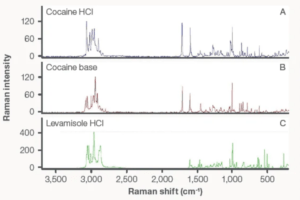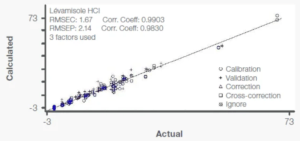The amount of seized illegal drugs is increasing significantly in all important ports of Northern Europe. Rotterdam, Antwerp, Dunkirk and Le Havre are considered to be the smugglers’ main gateways to Europe. And while drug lords rejoice in the idea of a white Christmas, security forces and their laboratories are faced with the task of quickly and reliably identifying suspected substances, often even from a minimal amount of sample.
One of the most important drugs is cocaine. It is an alkaloid obtained from coca leaves that is typically sold as a white crystalline powder. It can be either in the form of a water-soluble salt (for inhalation or intravenous application) or as a free base (crack) for smoking. To increase the volume of the product, cocaine is often mixed with other substances that are cheap or provide users with additional physiological effects. The most frequently added substances include e.g. caffeine, hydroxyzine, lidocaine, levamisole, imidazothiazole, starch, phenacetin and sugars such as lactose, mannitol or glucose.
Of these, we have focused in this article on levamisole and imidazothiazole, which are veterinary antiparasitics whose popularity as diluents has increased significantly in the last decade. Currently, molecular spectroscopy methods are first used to analyze suspect substances, and then the samples are analyzed in detail by GC-MS and GC-FID.

For rapid analysis, the forensic laboratory in Lille has developed a quantitative application of Raman spectroscopy (FT-IR and Nicolet iS50 FT-Raman spectrometer), which can be combined with chemometric methods to determine the concentration of cocaine and antiparasitic drugs in a few tens of seconds. Thanks to this, it is possible to get accurate results much faster. With this technique, it is also possible to analyze all the additives that can be encountered, create your own methods and thus penetrate deeply into the secrets of drug laboratories.

In addition, sample preparation for measurement using Raman spectroscopy is not needed, or is minimal. It is therefore a cheap, fast, reliable and accurate method that does not require any additional chemicals or highly skilled workers, so the Nicolet iS50 spectrometer should not be missing in any modern laboratory. You can find more information here.
